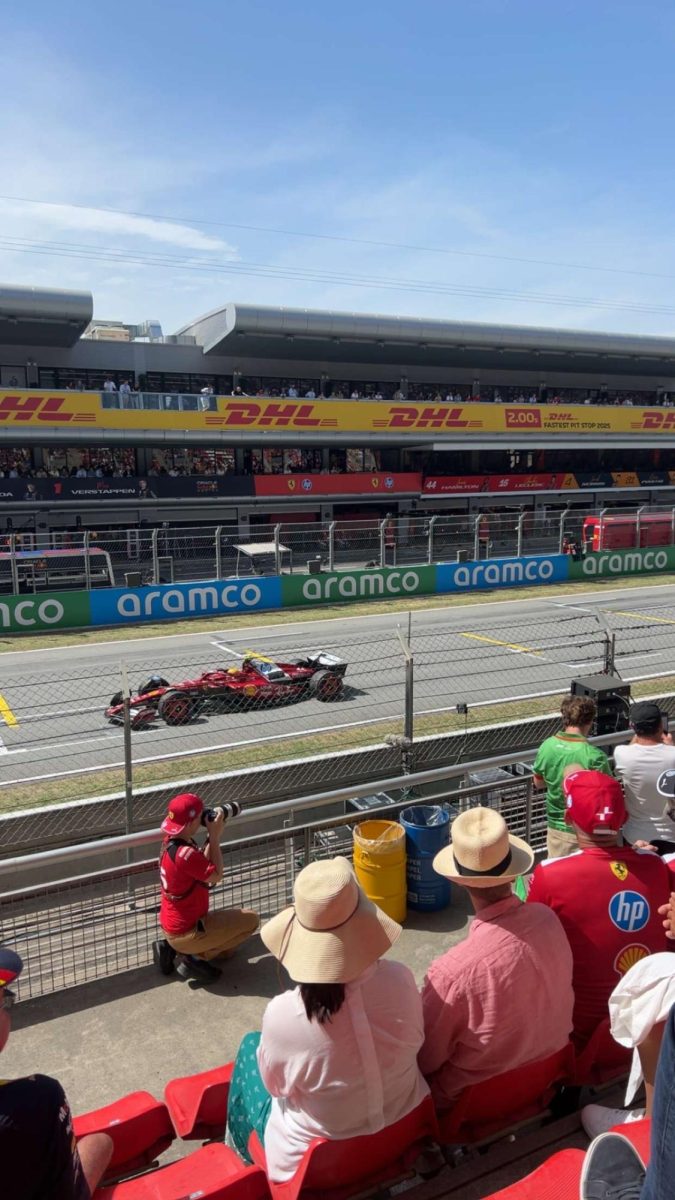“It’s Lights Out and Away We Go”
Almost every weekend, people around the world turn on their TVs to watch a Formula One race. Twenty drivers will line up on the track and wait for the red lights to disappear. Since the 1950s, this has been a rolling tradition. “Before 1950, Grand Prix racing had a rich history, but it was scattered—prestigious events, legendary cars, superstar drivers, no unified global title,” Race Sundays said. “In 1950, the FIA stitched it together with a points-paying World Championship for Drivers. Silverstone got the honor of firing the starting gun.”
So much happens behind the scenes before race day. While the drivers often receive all the credit for the win, many others are crucial parts of the team. The team principal is one of the most critical people besides the drivers. The principal is in charge of oversight at the track and in the factory. They also help create a strategy for each race, such as when to make a pit stop or which tyres to use at the start. The technical director, just like the team principal, watches over the track and factory, but they are also in charge of the development of the car and making sure its development is heading in the right direction.
The Formula One cars can’t be transported by air, so after each race, the cars and all the teams leave in a big truck. This task is the traveling team’s job; their role is to coordinate and execute all travel arrangements to each destination. The factory team oversees building, testing, and having the car to each driver’s liking before race day. Finally, the pit crews are there to be ready for the vehicles to come into the pits. They have to change tires and occasionally the front wing in a rapid amount of time. If they don’t, the team could lose positions in a race.
With only 20 spots on the grid, it is tough to get a seat in an F1 car. First, the driver must be dominant enough in karting to be funded by teams or sponsors to race in F4. From F4 to F3, they do the same thing: be dominant and get money. When you make the jump from F3 to F2, then you will be on teams associated with F1 teams; they’re kind of like farm teams.
“Revealing a single season in F4 costs £575,000,” Planet F1 explained. “However, that’s a baseline package, lacking testing and travel, as well as essential extras such as a manager, driver, coach, physiotherapist, or nutritionist. With the serious youngsters competing in multiple F4 competitions simultaneously, costs for the bottom rung of the motorsport ladder can easily exceed £1 million. By the time a driver completes their second season of Formula 2, numbers obtained suggest a youngster can easily have spent £9 million for their chance to reach F1 – without any guarantee.”
The F1 world is a costly sport to get into, which is why it is so difficult. Even if you are the best of the best, you will still be required to pay a large amount of money. But if you make it to F1, it can very much pay off as drivers get paid more money than they originally spent.
The cars are one of the most crucial parts of the sport, but there are lots of limitations on them; they have to be built basically perfectly to help drivers win races.
“There is a long timeline to the phases outlined above, and oftentimes, work on a car can begin as early as 16 months before the car is finally built,” Flow Racers said. “For example, Mercedes-Benz began work on its 2019 car in the late stages of the 2017 season. However, in some cases, teams will remain focused on their current cars to win the development race and improve their chances of winning the world championship, as Red Bull did in 2021, taking it to the final race with Max Verstappen winning the Drivers’ World Championship.”
With Formula One being a fast-growing sport that is distinct from any other motor sport, understanding what’s happening during race week and at various times leading up to it can make it more enjoyable to watch.

